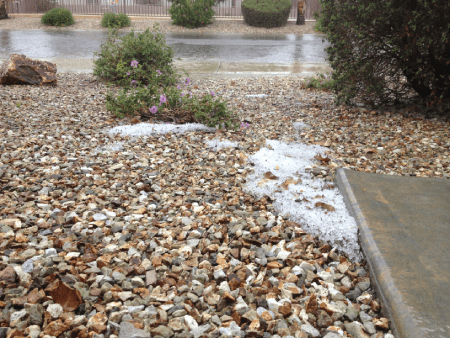
When heavy rains hit or during the spring thaw, water can gather around your basement. Flooding results in expensive damages if you fail to take the necessary precautions. It also causes mold and mildew growth. This can be very hazardous, especially if you have family members with compromised immunity.
Again, a flooded basement destroys furniture, fixtures, flooring and walls, which will cost you too much to repair or replace. Most homeowners now use a sump pump to avoid such ordeals. Let’s explore more on the sump pump so that you can take care of this piece of equipment and prevent flooding issues.
1. What Is a Sump Pump?
It’s a small pump installed at the crawlspace or the basement to drain water. Besides preventing flooding, it helps keep moisture levels low and also protects your house’s foundation. There are various types of sump pumps designed to suit different needs.
The submersible type contains a pump and motor in a single unit. This option works while entirely submerged into a basin in the basement. It’s a better option for most people since it operates quieter, saves on space and clogs less. Alternatively, you can choose to buy the pedestal option whose motor sits above the basin on a pedestal. It has a hose connecting the motor to the pump in the pit.
There is also the battery-operated backup option that runs even in the case of a power outage. When the water rises in the basin to a particular level, it triggers the float switch to get the battery into action. You can also opt for a water power backup sump pump, which operates through increased water pressure. It doesn’t require monitoring or battery change, but it contributes to increased water bills. Some states find this controversial, and you may need to confirm whether it’s allowed in your region before installation.
2. How Does It Work?
A technician installs the sump pump in a specially constructed basin that contains several holes connected to drain pipes for the purpose of collecting water. Once the water rises beyond a certain point, a pressure sensor or a float activator arm sends a signal to your pump, so it automatically turns on.
When the motor turns on, it kick-starts a fan-like component, known as the impeller, which draws water out of the pit through centrifugal force and pushes it to the discharge pipe. Have a professional do the installations to carefully position the discharge pipes and install a check valve to prevent the water from flowing back in. Preferably, the discharge pipes should drain downhill. Also, ensure that you bury the pipes at least five inches below the frost line to avoid freezing during winter.
3. How Often Should You Run the Sump Pump?
The sump pump should only run when needed if the water level activates the switch. The rate at which your sump pump runs will vary based on your location. It can kick on around two to three times daily. During heavy rain periods, expect to see your sump pump work for extended periods. If you live in an area that gets heavy snow, your sump pump will have to work extra hard when the snow and ice begin to melt in spring.
However, if the sump pump runs continuously, there could be a problem. First, turn off your power supply and check through the sump pit. If the water level is low and your system still runs, the float activator could be broken. Call an expert immediately to fix the issue.
On the other hand, if you notice a higher water level in the basin than you expect, call your water supplier and ask them to check whether there are any broken lines. Your sump pump can also continuously run if you have a small sump pit, a dirty basin or a clogged drain. Other times you could be using the wrong-size sump pump. If you reside in areas that are very wet, use equipment and a large basin to collect all the runoff water.
Additionally, if your sump pump won’t run at all, and you live in a low–lying area, it needs immediate attention to avoid flooding. Sometimes, your sump pump won’t run if the circuit breaker blows or if the floater arm activator gets stuck. You can try removing any debris from the sump pit or pull out the pump and check the impeller for clogs. If it still doesn’t work, seek professional assistance.
4. Who Needs to Use a Sump Pump?
It’s worth noting that not all homes come with or require a sump pump. However, in some situations, it’s of paramount importance. If your house often experiences flooding, then you need to install a sump pump. Again, if you notice that your basement appears wet a lot of the times, there could be a groundwater issue, and you need to install a sump pump to get rid of the excess. Those who live in low-lying areas need a sump pump since such regions tend to collect water quickly. If the soil doesn’t drain well, you risk flooding.
Additionally, if you use your basement as a living space for your family, use a sump pump to protect your furniture, carpets, walls and house occupants from mold effects. Also, if you use the basement as a storage area, consider installing a sump pump. For those who live in areas that experience high rains or heavy snow, chances are you will have to deal with water concerns at some point. In these cases, you will need a sump pump.
5. How to Maintain Your Sump Pump
When well maintained, the pedestal sump pump can remain functional for up to 30 years. Although submersible pumps are more susceptible to failure, they can also last for up to 10 years. Regularly open the sump pit and clear off any debris, rocks or mud to protect your unit from clogging. Also, ensure that the float rests above the water and that it can move freely.
Fill the pit with some water so that the float reaches the sensor switch. Observe the operation, go outside and confirm whether it channels the water outside. If you notice no water coming out through the discharge pipes, it could be flowing back to your home foundation. Try looking for logs or twigs that could cause blockage in the line. If any, dislodge them by using a plumbing snake or flushing high water pressure through the pipe. Remember to cut the power supply when handling such a task. It’s also vital to schedule annual sump pump maintenance services, preferably during the winter, as you prepare your house for spring storms.
Wrapping Up
Like any other equipment, a sump pump requires regular tune-ups to keep it running at optimum efficiency. There are various simple tasks you can perform on your own, as outlined above. However, complex projects require professional assistance. If you need help, reach out to Black-Haak, and we can handle any plumbing task at the highest professional level. Our company offers various services including air conditioner and heating systems installation, repair, replacement and maintenance services.
We also provide electrical, indoor air quality and geothermal services. We serve Greenville, WI, and the surrounding areas. Call our representatives today to book an appointment and enjoy our exceptional services.

